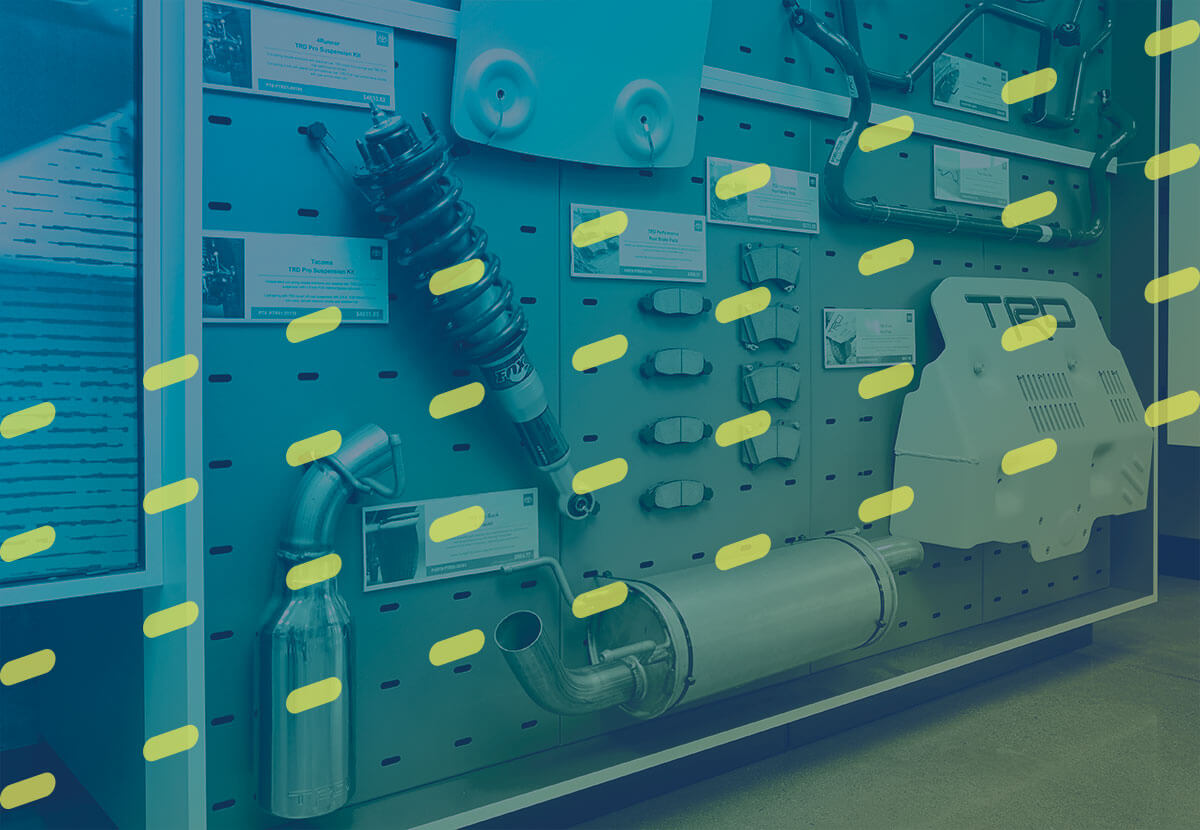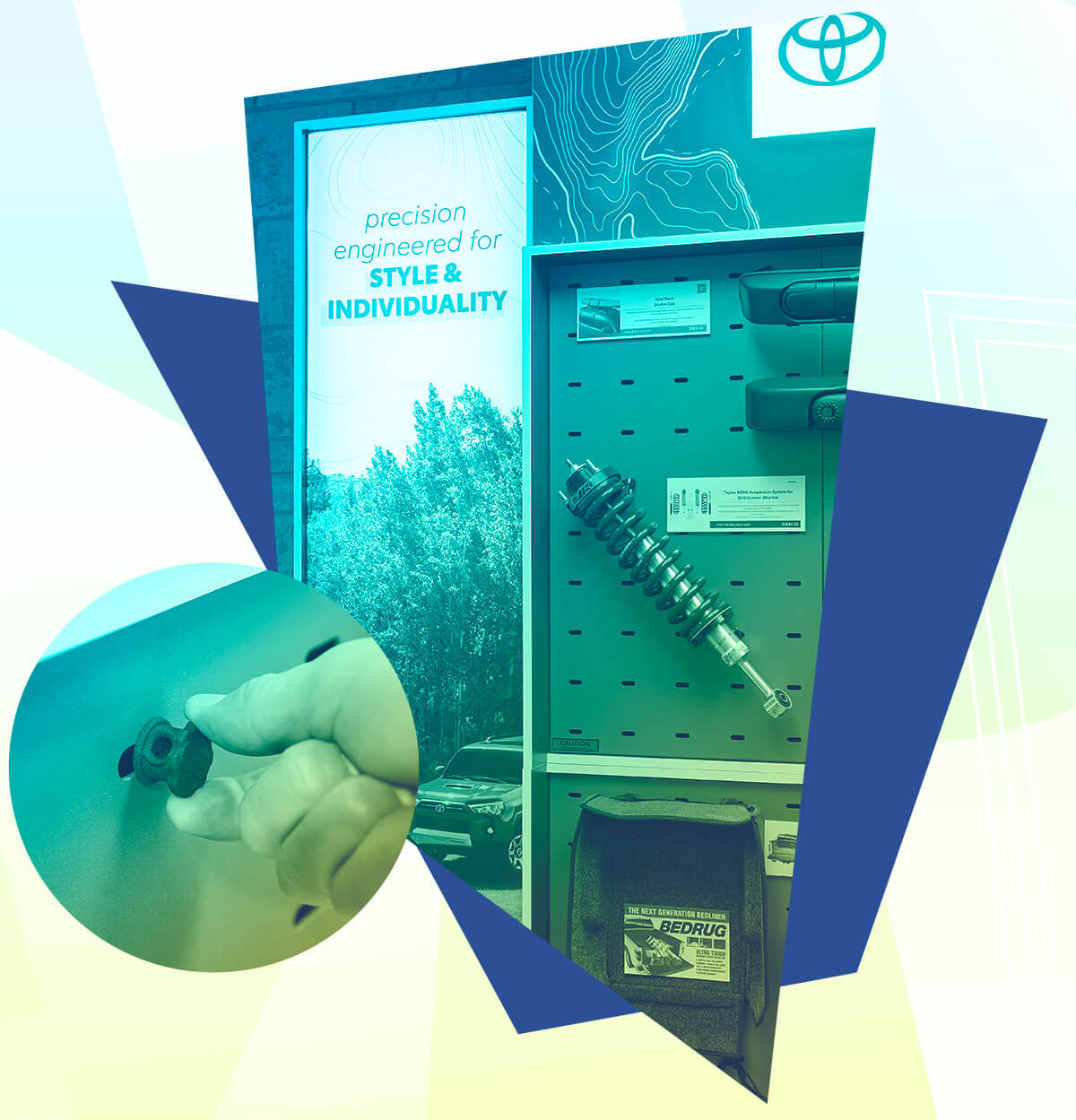“Retail accessory sales are the only segment that’s up for us,” he says, giving much of the credit to the new UltraGrid display. “It’s definitely doing its job.”
Reese Jones, a Stevinson parts care professional, says he considers UltraGrid to be an extension of his parts department and gives credit to the new accessory display system for what he calls “a large boost” in accessory sales. “Placement on the showroom floor has had the biggest impact on the sale of accessories,” Jones says. “The wall works.”
According to Jones, accessory sales at Stevinson Toyota West have noticeably increased since the UltraGrid system was installed. “I can say for sure that we’ve had more sales associates actively working with customers to add accessories to their vehicles from the wall,” Jones says.
The market for accessories is fertile and vast; however, many dealerships struggle to move them. Much of that can be attributed to sales staff not being fully informed on accessories. “No one likes to give the impression that they don’t know what’s available,” Horner says.
UltraGrid has that covered. DCI product designers developed a customizable fact tag system, which communicates attributes and prices, all designed to get relevant information in front of the salesperson and customer.










